Bone Loss Results From Tooth Loss
Natural tooth roots are embedded in the jawbone, providing a stable foundation that allows the teeth to function properly. When teeth are lost or removed, the bone that previously supported those teeth begins to deteriorate, or resorb. The bone melts away.
Dental Implants Preserve Bone
Dental implants are substitute tooth roots, providing the same function as natural tooth roots, including stimulating the bone, thereby preserving it – and preventing the bone resorption (deterioration) that would normally occur with tooth loss. The jawbone actually forms a bond with the dental implants, creating a stable foundation for replacement teeth that look, feel and function like natural teeth.
Anterior Tooth Loss and Bone Resorption
When a tooth is lost or removed in the front of the mouth, where the bone is very thin, the bone will usually melt away rather quickly, giving the appearance that the bone and gums are caving in, or collapsing. Very often, this defect is visible when smiling.
If a front tooth is replaced with a tooth supported bridge, eventually the replacement tooth looks like a false tooth as the gums and bone above the bridge begin to collapse, leaving the false tooth suspended without support.
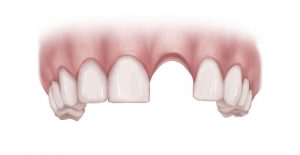
Single missing anterior tooth
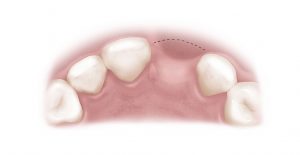
Dotted line indicates where the bone
should be when tooth is in place
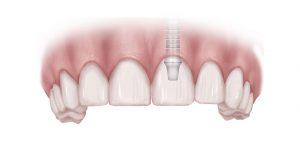
Dental implant crowns replace teeth and preserve bone
When a tooth is replaced with an implant-supported crown, the implant functions like a natural tooth root and preserves the bone, preventing the defect in the bone that would normally occur with tooth loss.
Posterior Tooth Loss and Bone Resorption
When all of the posterior teeth are missing, the back of the mouth actually collapses as the bone deteriorates. The teeth in the front of the mouth begin to flare out as the bite collapses and the corners of the mouth droop. Facial appearance begins to change as the height of the jaw decreases.
If posterior teeth are replaced with a partial denture, the bone resorption process is accelerated as the partial presses down on the gums and underlying bone when eating. Replacing the posterior teeth with implant supported bridges preserves the bone, preventing the bone deterioration that leads to bite collapse, which occurs when teeth are missing.

Lower jaw with all
of the teeth in place
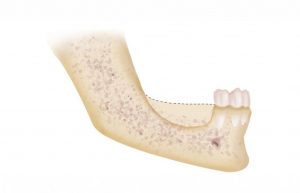
Bone resorption where
posterior teeth are missing
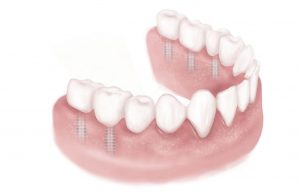
Dental implants and crowns
replace teeth and preserve bone
Complete Tooth Loss and Facial Structure Collapse
When all of the teeth are missing, the jaws deteriorate rapidly. In addition, as the bone melts away the muscles migrate, or pull back from their natural position. The lips cave in as they lose support and wrinkles increase dramatically as the facial structures collapse. Complete tooth loss and the deterioration of the jaws can also result in significant overall health problems related to improper digestion and malnutrition.
If missing teeth are replaced with dentures, facial structures are compromised. Dentures accelerate the bone resorption process as they put pressure on and compact the gums and underlying bone. As facial structures continue to collapse, the dentures must be relined (made thicker) to compensate for additional bone loss.
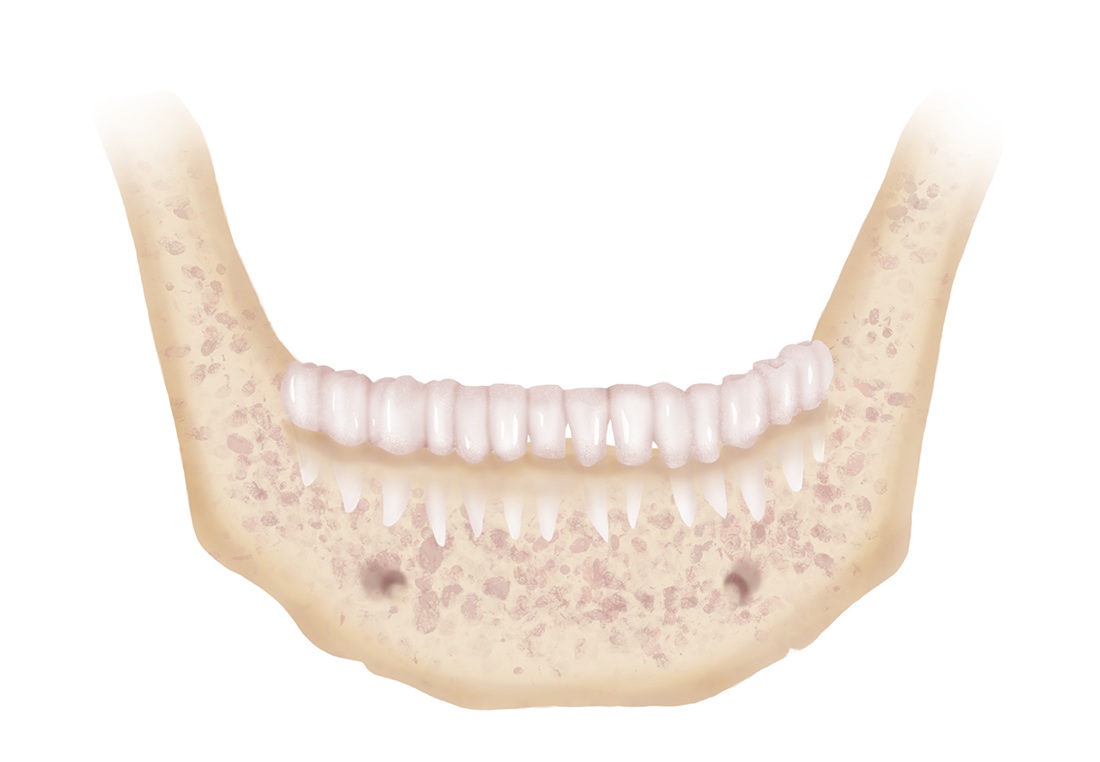
Lower jaw with all teeth in place
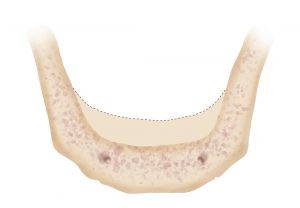
Bone resorption occurs when all teeth are missing
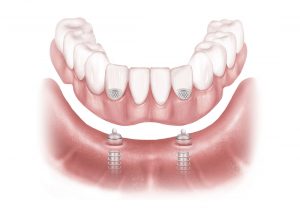
Dental implants preserve bone and support replacement teeth
Replacing teeth with implant retained overdentures (or bridges) will preserve the bone and prevent the further deterioration of facial structures and the related health problems that would normally occur with complete tooth loss.